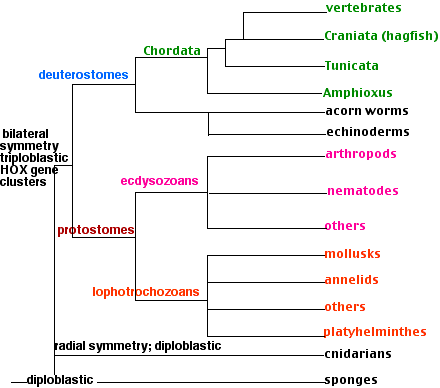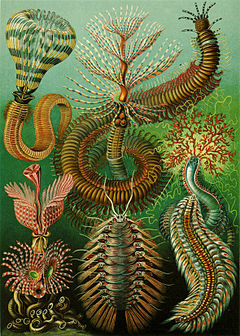Topic benthic invertebrate: Delve into the fascinating world of benthic invertebrates, the unsung heroes of aquatic ecosystems, playing crucial roles in maintaining environmental balance and water quality.
Table of Content
- What are benthic invertebrates and their roles in marine environments?
- What Are Benthic Invertebrates?
- The Ecological Importance of Benthic Invertebrates
- Indicators of Water Quality
- YOUTUBE: What are Benthic Invertebrates and how can they help us?
- Types and Diversity of Benthic Invertebrates
- The EPT Index: A Tool for Monitoring Water Health
- Collection and Study Methods
- Impact of Environmental Changes
- Conservation Efforts and Public Awareness
- Case Studies and Current Research
- Resources and Further Reading
What are benthic invertebrates and their roles in marine environments?
Benthic invertebrates are small aquatic animals that live on or in the bottom sediments of marine environments. They play important roles in these ecosystems and contribute to various ecological processes. Some of their roles include:
- Food Source: Benthic invertebrates serve as a source of food for many other organisms in marine environments. They are an essential part of the food chain, providing nutrients for larger predators such as fish and birds.
- Nutrient Cycling: Benthic invertebrates play a crucial role in the cycling of nutrients in marine ecosystems. They consume organic matter present in sediments and release nutrients back into the water column through their excretion. This helps maintain the overall nutrient balance in the ecosystem.
- Bioturbation: Benthic invertebrates, through their burrowing and feeding activities, cause physical disturbance to sediments known as bioturbation. This process helps in the mixing of sediments, promoting oxygenation, and enhancing other chemical and biological processes in the sediment.
- Indicator Species: Benthic invertebrates are often used as bioindicators to assess the health of marine ecosystems. Changes in their abundance, diversity, and community structure can indicate environmental disturbances, pollution, or other ecological changes.
- Filter Feeders: Some benthic invertebrates, such as mussels and oysters, are filter feeders. They help improve water quality by filtering out suspended particles and excess nutrients from the water column. This filtration process can enhance water clarity and reduce the impacts of eutrophication.
Overall, benthic invertebrates play critical roles in marine environments, influencing nutrient cycling, providing food sources, promoting sediment stability, and serving as indicators of ecosystem health.
READ MORE:
What Are Benthic Invertebrates?
Benthic invertebrates are a diverse group of organisms that live on the bottom of water bodies. These creatures, which lack a backbone, play a vital role in aquatic ecosystems. Found in various habitats, from mountain streams to deep ocean floors, they include a wide array of species such as worms, snails, clams, and the larval stages of insects like mayflies and dragonflies.
- Size and Type Variations: The size of benthic invertebrates can range from microscopic to several centimeters in length. This group encompasses many different types, from mollusks and crustaceans to numerous insect larvae and polychaete worms.
- Habitat and Distribution: They are found in diverse environments including freshwater rivers, lakes, and marine ecosystems. Their presence and distribution are influenced by factors like water temperature, depth, oxygen levels, and sediment type.
- Role in the Ecosystem: Benthic invertebrates are crucial for the health of aquatic ecosystems. They are key players in nutrient cycling, serve as food for larger animals, and are indicators of water quality and environmental changes.
- Indicator Species: Many benthic invertebrates are sensitive to pollution and changes in their environment, making them excellent indicators of the ecological health of a water body.
Understanding these organisms is not only fascinating but also essential for monitoring and maintaining healthy aquatic ecosystems.
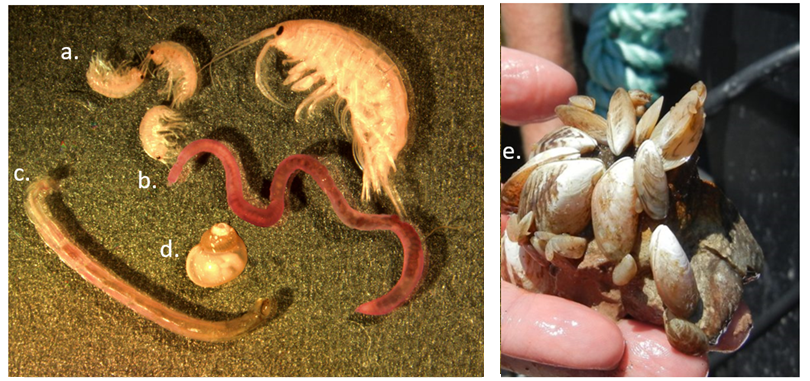
The Ecological Importance of Benthic Invertebrates
Benthic invertebrates play a critical role in aquatic ecosystems, serving as key components in maintaining ecological balance and biodiversity. These organisms, which include a variety of macroinvertebrates, are essential in food webs, contributing to nutrient cycling, sediment processing, and as indicators of water quality.
Key Roles in Ecosystem Functioning
- Food Web Contribution: Benthic invertebrates are vital food sources for many aquatic species, including fish and birds, thereby supporting diverse food chains.
- Nutrient Cycling: They participate actively in the decomposition of organic matter and nutrient cycling, which are crucial processes for ecosystem productivity.
- Sediment Processing: These organisms also contribute to sediment processing and distribution, influencing the physical aspects of aquatic habitats.
Indicators of Ecological Health
Benthic invertebrates are sensitive to environmental changes, making them effective bioindicators. Their presence, diversity, and abundance can provide insight into the health of aquatic ecosystems, particularly in relation to water quality and pollution levels.
Impact of Human Activities
Human activities such as pollution, urban development, and agricultural practices significantly impact benthic invertebrate populations. Changes in their communities can indicate broader ecological shifts and disturbances in aquatic ecosystems.
Conservation and Monitoring
Conserving benthic invertebrate habitats is crucial for maintaining ecological balance in aquatic environments. Monitoring their populations and diversity is also key in environmental management and policy-making to ensure the health and sustainability of water bodies.
Research and Studies
Ongoing research continues to uncover the complex roles of benthic invertebrates in ecosystems. Studies focus on their responses to environmental changes, their interactions within food webs, and their overall contribution to ecosystem health and resilience.
Indicators of Water Quality
Benthic macroinvertebrates, including various insects, worms, and crustaceans, are crucial for assessing the water quality of aquatic ecosystems. They serve as reliable indicators due to their sensitivity to changes in water quality and environmental conditions.
Why Benthic Macroinvertebrates are Effective Indicators
- Sensitivity to Pollution: Different species of benthic macroinvertebrates have varying levels of tolerance to pollution. The presence or absence of certain species can indicate the level of pollution in a water body.
- Indicators of Long-term Water Quality: Because many macroinvertebrates have relatively long lifecycles and limited mobility, they reflect the cumulative impact of environmental conditions over time.
- Easy to Sample and Identify: Benthic macroinvertebrates are relatively easy to collect and identify, making them practical for regular monitoring of water quality.
Using Benthic Macroinvertebrates in Water Quality Assessment
Scientists analyze the diversity, abundance, and composition of benthic macroinvertebrate communities to evaluate the biological condition of water bodies. A healthy water system typically supports a wide variety of macroinvertebrate species, including those sensitive to pollution. Conversely, a dominance of pollution-tolerant species, or a lack of diversity, often indicates degraded water quality.
Macroinvertebrates and Human Impact
Human activities such as industrial discharge, agricultural runoff, and urban development can significantly alter the composition of benthic macroinvertebrate communities. Monitoring these changes helps in understanding the extent and impact of human-induced environmental stressors on aquatic ecosystems.
Tools for Monitoring and Research
Various tools and methodologies, including biotic indices and metrics based on macroinvertebrates, are used for water quality assessment and ecological research. These methods help in understanding ecological health and guiding environmental management and conservation efforts.
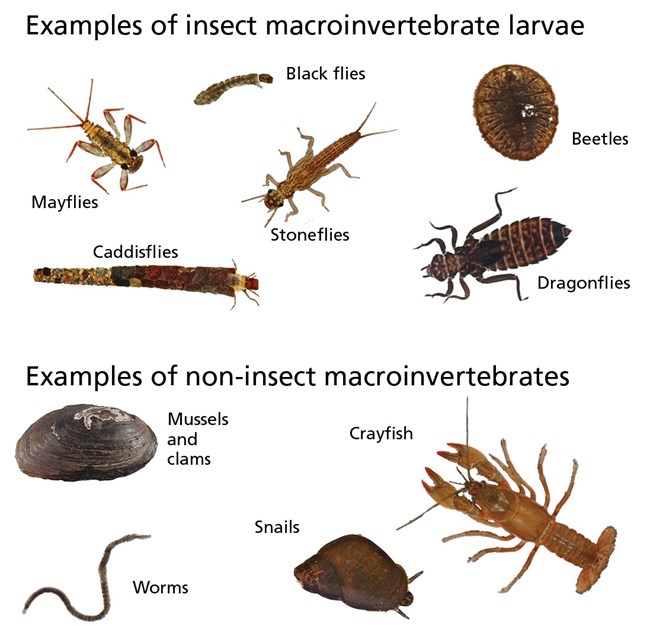
What are Benthic Invertebrates and how can they help us?
Dive into the mesmerizing world of the benthic zone where vibrant marine life thrives. Discover the unique beauty and intricate ecosystems hidden beneath the ocean\'s surface in this captivating video!
The Estuary\'s Living Benthic Invertebrates
Explore the enchanting estuary, where rivers meet the sea to create a harmonious blend of fresh and saltwater habitats. Witness the breathtaking landscapes and a plethora of fascinating species that call this dynamic environment home in this stunning video!
Types and Diversity of Benthic Invertebrates
Benthic invertebrates are a diverse group of organisms that inhabit the bottom layers of water bodies, from shallow streams to the deep sea. They encompass a wide range of metazoan phyla, indicating a vast diversity in both form and function.
Classification and Types
- Macrobenthos: These are larger benthic invertebrates, typically visible to the naked eye, like crustaceans, mollusks, and worms.
- Meiobenthos: Smaller than macrobenthos, these organisms range in size from 35 to 500 micrometers and include nematodes and small crustaceans.
- Megafauna: These are the largest benthic invertebrates, often exceeding 3cm in size, and include species like sea stars and large crustaceans.
Diversity Across Habitats
Benthic invertebrates are found in a variety of marine environments worldwide, with their diversity varying greatly across different habitats. From intertidal zones to the deepest parts of the ocean, each environment hosts unique assemblages of these organisms.
Ecological Significance
The vast diversity of benthic invertebrates plays a crucial role in ecological processes, such as nutrient cycling and food web dynamics. They also contribute to the overall health and stability of aquatic ecosystems.
Research and Conservation
Research on benthic invertebrates is vital for understanding ecological patterns and global processes in marine ecosystems. This knowledge is essential for developing conservation and management strategies to mitigate anthropogenic impacts and preserve biodiversity.
The EPT Index: A Tool for Monitoring Water Health
The EPT Index is a biological assessment tool used to evaluate the health of water bodies, particularly streams and rivers. It is based on the presence and diversity of certain macroinvertebrates from the orders Ephemeroptera (mayflies), Plecoptera (stoneflies), and Trichoptera (caddisflies).
Why EPT Index is Effective
- Species Sensitivity: EPT species are sensitive to pollution, making their presence a good indicator of water quality.
- Taxa Richness: The index measures the number of different species within these orders, correlating higher diversity with better water quality.
- Easy to Sample: These macroinvertebrates are relatively easy to collect and identify, facilitating regular monitoring.
Application in Water Quality Assessment
The EPT Index is used to quickly assess the biological quality of a water body. A higher number of EPT taxa typically indicates healthier water conditions. Conversely, a lower count or absence of these taxa suggests potential pollution or environmental disturbance.
Limitations and Complementary Methods
While the EPT Index is a valuable tool, it provides a snapshot rather than a complete picture of water quality. It is often used in conjunction with physical and chemical water quality assessments to provide a more comprehensive understanding of a water body"s health.
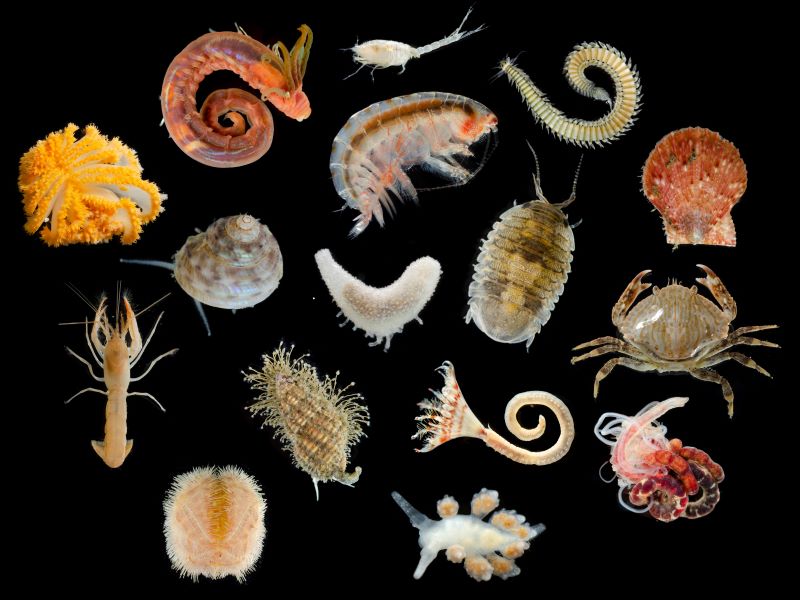
Collection and Study Methods
The collection and study of benthic invertebrates are integral parts of aquatic ecological surveys, providing essential data for assessing water quality and understanding ecological dynamics. The process involves a combination of field collection and laboratory analysis.
Field Collection Methods
- Site Selection: Choosing appropriate sites and habitats within water bodies is crucial for representative sampling.
- Sampling Techniques: Various techniques are employed depending on the habitat, such as qualitative multihabitat sampling and semi-quantitative single habitat sampling. Common tools include nets, dredges, and grab samplers.
- Sample Handling: Collected samples are carefully preserved and transported to the laboratory for further analysis.
Laboratory Processing
- Subsampling and Sorting: In the lab, samples are subsampled and sorted. This involves separating benthic invertebrates from debris and other non-target organisms.
- Mounting and Labeling: Certain organisms, like midge larvae, require mounting on slides for detailed examination.
- Quality Control: A portion of the sorted samples undergoes quality control checks to ensure accuracy in sorting and identification.
Identification and Analysis
- Taxonomic Identification: Organisms are identified to the lowest practical taxonomic level (usually genus or species) using microscopes and taxonomic keys.
- Recording and Archiving: Data on the identity and number of organisms are recorded, and samples are archived for future reference.
- Quality Control in Taxonomy: Sample identifications are verified by a second taxonomist, and a voucher collection of all samples is maintained.
Application in Water Quality Assessment
The data obtained from these methods are crucial for assessing the biological quality of water bodies, understanding the impacts of environmental stressors, and aiding in the development of conservation strategies.
Impact of Environmental Changes
Benthic invertebrates, essential components of aquatic ecosystems, face significant impacts from environmental changes. These organisms, including crustaceans, worms, insect larvae, snails, and clams, play vital roles in food webs, nutrient cycles, and serve as indicators of environmental health.
- Invasive Species: The introduction of invasive species like dreissenid mussels (zebra and quagga) in the Great Lakes has led to drastic changes in the benthic community. These filter feeders, by colonizing the lake bottom, alter ecosystem functions, affecting light penetration, nutrient cycles, and reducing phytoplankton abundance.
- Pollution Tolerance: Benthic invertebrates vary in their tolerance to pollution, making them reliable indicators of environmental change. Changes in their community composition can reflect alterations in their immediate surroundings.
- Habitat Alteration: Changes in habitat due to human activities, such as urbanization and land-use changes, can significantly affect the distribution and abundance of benthic invertebrates. This, in turn, impacts the broader ecosystem functions they support.
- Climate Change: Climatic shifts, including changes in temperature and precipitation patterns, affect the habitats of benthic invertebrates, influencing their life cycles and distribution.
These changes not only impact the benthic invertebrates themselves but also have cascading effects on the larger ecosystems they inhabit. Understanding and mitigating these impacts is crucial for preserving the health and diversity of aquatic environments.
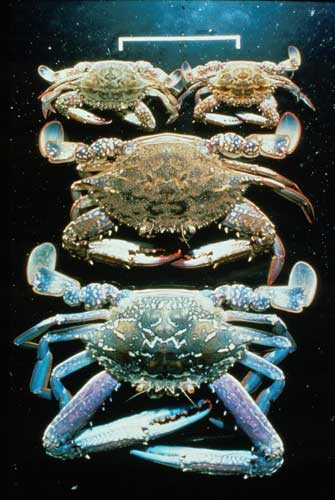
Conservation Efforts and Public Awareness
Efforts to conserve benthic invertebrates are gaining momentum, driven by an increased understanding of their role in nutrient cycling and ecosystem balance. The challenges faced by these invertebrates, such as habitat destruction and pollution, highlight the need for comprehensive conservation strategies.
- Education and Public Engagement: Raising public awareness about the significance of benthic invertebrates is crucial. Initiatives that educate people about their role in nutrient cycling and ecosystem health can foster a sense of stewardship and support for conservation efforts.
- Research and Monitoring: Ongoing research is essential to understand the specific needs and challenges faced by benthic invertebrates. Monitoring their populations and habitats helps in assessing the effectiveness of conservation measures and in adapting strategies accordingly.
- Policy and Management: Developing policies that protect critical habitats and regulate activities impacting benthic invertebrates is vital. Management practices that minimize pollution and habitat destruction can significantly aid in their conservation.
- Community Involvement: Involving local communities in conservation efforts can lead to more effective and sustainable outcomes. Engaging people in citizen science projects and local conservation initiatives fosters a deeper connection with their natural surroundings.
Conservation of benthic invertebrates is not just about preserving species; it"s about maintaining the balance of our ecosystems. Through concerted efforts in research, policy, and public engagement, we can ensure the health and resilience of these vital organisms.
Case Studies and Current Research
Efforts to conserve benthic invertebrates are gaining momentum, driven by an increased understanding of their role in nutrient cycling and ecosystem balance. The challenges faced by these invertebrates, such as habitat destruction and pollution, highlight the need for comprehensive conservation strategies.
- Education and Public Engagement: Raising public awareness about the significance of benthic invertebrates is crucial. Initiatives that educate people about their role in nutrient cycling and ecosystem health can foster a sense of stewardship and support for conservation efforts.
- Research and Monitoring: Ongoing research is essential to understand the specific needs and challenges faced by benthic invertebrates. Monitoring their populations and habitats helps in assessing the effectiveness of conservation measures and in adapting strategies accordingly.
- Policy and Management: Developing policies that protect critical habitats and regulate activities impacting benthic invertebrates is vital. Management practices that minimize pollution and habitat destruction can significantly aid in their conservation.
- Community Involvement: Involving local communities in conservation efforts can lead to more effective and sustainable outcomes. Engaging people in citizen science projects and local conservation initiatives fosters a deeper connection with their natural surroundings.
Conservation of benthic invertebrates is not just about preserving species; it"s about maintaining the balance of our ecosystems. Through concerted efforts in research, policy, and public engagement, we can ensure the health and resilience of these vital organisms.
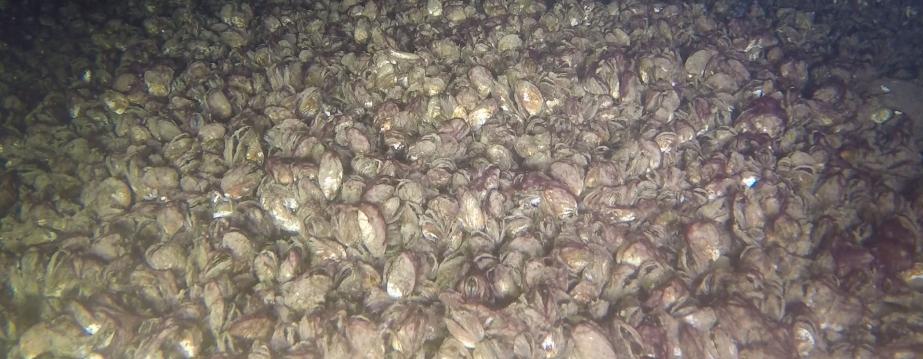
READ MORE:
Resources and Further Reading
Efforts to conserve benthic invertebrates are gaining momentum, driven by an increased understanding of their role in nutrient cycling and ecosystem balance. The challenges faced by these invertebrates, such as habitat destruction and pollution, highlight the need for comprehensive conservation strategies.
- Education and Public Engagement: Raising public awareness about the significance of benthic invertebrates is crucial. Initiatives that educate people about their role in nutrient cycling and ecosystem health can foster a sense of stewardship and support for conservation efforts.
- Research and Monitoring: Ongoing research is essential to understand the specific needs and challenges faced by benthic invertebrates. Monitoring their populations and habitats helps in assessing the effectiveness of conservation measures and in adapting strategies accordingly.
- Policy and Management: Developing policies that protect critical habitats and regulate activities impacting benthic invertebrates is vital. Management practices that minimize pollution and habitat destruction can significantly aid in their conservation.
- Community Involvement: Involving local communities in conservation efforts can lead to more effective and sustainable outcomes. Engaging people in citizen science projects and local conservation initiatives fosters a deeper connection with their natural surroundings.
Conservation of benthic invertebrates is not just about preserving species; it"s about maintaining the balance of our ecosystems. Through concerted efforts in research, policy, and public engagement, we can ensure the health and resilience of these vital organisms.
Embark on a fascinating journey to understand the vital role of benthic invertebrates in our ecosystems and their incredible diversity. Dive deeper into their world to appreciate their ecological significance and the urgent need to conserve these hidden wonders.


